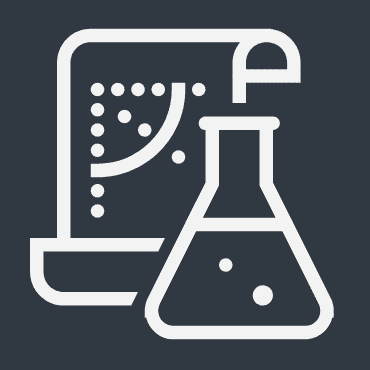Unlocking the Power of RAG: Understanding Context Relevance, Groundedness, and Answer Relevance
Unleashing the Power of Retrieval Augmented Generation (RAG) for Natural Language Processing: Leveraging External Knowledge to Enhance Coherence, Relevance, and Grounding in Generated Outputs - WowData.Science

In the rapidly evolving landscape of natural language processing, a new approach has emerged that is transforming the way language models generate content - Retrieval Augmented Generation (RAG). Unlike traditional language models that rely solely on their internal knowledge, RAG models leverage the power of external information retrieval to enhance the quality, relevance, and grounding of their generated outputs.
At the heart of RAG lies the delicate balance of three critical components - retrieval, augmentation, and generation. By seamlessly integrating these elements, RAG models are able to retrieve the most relevant information from knowledge bases, intelligently weave it into the generation process, and produce outputs that are not only coherent, but also firmly grounded in factual evidence.
However, evaluating the performance of RAG models goes beyond just measuring their overall accuracy. Three key metrics - context relevance, groundedness, and answer relevance - provide deeper insights into the model's ability to truly understand the input, utilize the retrieved knowledge, and generate responses that are tailored to the specific task or query. In this blog post, we'll dive deep into each of these concepts, exploring how they contribute to the success of RAG-powered language models and the implications for real-world applications.
The RAG Triad
The RAG (Retrieval Augmented Generation) Triad refers to the three key components that make up the Retrieval Augmented Generation approach in language models:
Retrieval
The retrieval component is responsible for finding relevant information from a knowledge base or external sources to assist the language model in generating more informed and contextual outputs.
This component typically involves techniques such as dense retrieval, sparse retrieval, or a combination of both, to efficiently locate the most relevant information.
Augmentation
The augmentation component takes the retrieved information and combines it with the input text or the language model's internal state to enrich the generation process.
This can involve techniques like attention mechanisms, concatenation, or more sophisticated fusion methods to effectively integrate the retrieved information into the generation.
Generation
The generation component is the core language model that is responsible for producing the final output, conditioned on the input text and the augmented information from the retrieval component.
This component typically uses neural network-based language models, such as Transformers or Seq2Seq models, to generate coherent and contextually relevant text.
The interplay of these three components, Retrieval, Augmentation, and Generation, is what defines the RAG Triad and forms the basis of the Retrieval Augmented Generation approach. By leveraging external knowledge and information, the language model can generate more informative and coherent outputs, often outperforming traditional language models on tasks that require factual knowledge or reasoning beyond the model's training data.
The Three Pillars of Evaluating RAG Models
In the context of Retrieval Augmented Generation (RAG), the concepts of context relevance, groundedness, and answer relevance are important:
Context Relevance
- Context relevance refers to how well the retrieved information from the knowledge base is relevant to the input context or the task at hand.
- It measures how well the retrieved information fits the current context and can be effectively used to augment the generation process.
- High context relevance implies that the retrieved information is closely related to the input and can be seamlessly integrated to improve the generation quality.
Groundedness
- Groundedness in RAG refers to the degree to which the generated output is grounded in or supported by the information retrieved from the knowledge base.
- It measures how well the generated text is backed up by the factual knowledge or evidence from the external sources, as opposed to being purely speculative or hallucinated.
- Higher groundedness indicates that the generated output is well-supported and aligned with the retrieved information, making it more reliable and trustworthy.
Answer Relevance
- Answer relevance evaluates how relevant the generated output is to the original task or query.
- It assesses whether the generated text effectively answers the question or addresses the given task, based on the input context and the retrieved information.
- High answer relevance suggests that the RAG model has successfully leveraged the retrieved knowledge to produce a relevant and informative response.
These three concepts are crucial in the evaluation and assessment of RAG models, as they help measure the model's ability to:
- Retrieve relevant information to the current context
- Effectively integrate the retrieved knowledge into the generation process
- Produce outputs that are both grounded in facts and relevant to the given task or query.
By focusing on these aspects, researchers and developers can better understand the strengths and limitations of RAG models and work towards improving their performance on various language understanding and generation tasks.
Putting RAG to the Test
In this section, we will be analyzing Context Relevance, Groundedness, and Answer Relevance in a Real-World Scenario. Let's go through an example to demonstrate context relevance, groundedness, and answer relevance in Retrieval Augmented Generation (RAG).
Let's consider the following input question.
Q: What is the capital city of France?
Using a RAG model, the process would involve the following steps.
1. Retrieval
- The RAG model would retrieve relevant information from a knowledge base or external sources to answer the question about the capital of France.
- The retrieved information could be something like: "Paris is the capital city of France."
2. Augmentation
- The retrieved information about Paris being the capital of France would be integrated with the input question to enrich the generation process.
3. Generation
- The RAG model would then generate the final answer based on the input question and the augmented information from the retrieval step.
- The generated output could be: "The capital city of France is Paris."
Now, let's evaluate the example in terms of the three key concepts.
a. Context Relevance
- In this case, the retrieved information about Paris being the capital of France is highly relevant to the input question, which is asking for the capital city of France.
- The retrieved information directly addresses the context of the question, making it a good fit for the task at hand.
b. Groundedness
- The generated output, "The capital city of France is Paris." is well-grounded in the retrieved information, which states that Paris is the capital of France.
- The generated answer is supported by the factual knowledge from the retrieval component, making it a reliable and trustworthy response.
c. Answer Relevance
- The generated output, "The capital city of France is Paris." is directly relevant to the original question, which asked for the capital city of France.
- The RAG model has successfully leveraged the retrieved information to produce a relevant and informative answer to the given question.
In this example, the RAG model has demonstrated high context relevance, groundedness, and answer relevance, indicating that it has effectively utilized the retrieved information to generate a suitable and well-supported response to the input question.
This type of example showcases how the RAG Triad of Retrieval, Augmentation, and Generation can be used to produce contextually relevant, grounded, and answer-relevant outputs, which are crucial for the performance and reliability of language models in various applications.
Embracing the Power of the RAG Triad
As we've explored throughout this blog post, the Retrieval Augmented Generation (RAG) approach represents a significant evolution in the capabilities of language models. By seamlessly integrating the three core components of retrieval, augmentation, and generation, RAG models unlock a new level of contextual awareness, factual grounding, and task-oriented relevance in their outputs.
The metrics of context relevance, groundedness, and answer relevance serve as crucial benchmarks for evaluating the performance of RAG models. These measures provide invaluable insights into the models' ability to truly understand the input, leverage relevant external knowledge, and generate responses that are tailored to the specific needs of the user or application.
Looking ahead, the continued advancement of RAG-powered language models holds immense potential. From powering more intelligent virtual assistants and chatbots to enhancing research and decision-making processes, the ability to generate content that is contextually relevant, grounded in facts, and directly responsive to the task at hand can have transformative impacts across a wide range of industries and domains.
As researchers and developers continue to push the boundaries of RAG, we can expect to see even more sophisticated and versatile language models that seamlessly bridge the gap between human knowledge and machine-generated outputs. By embracing the power of the RAG triad, we are poised to unlock new frontiers in natural language processing and harness the full potential of AI-driven language generation.
